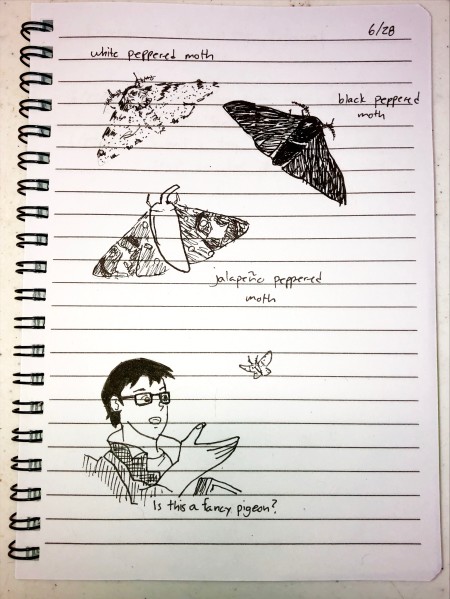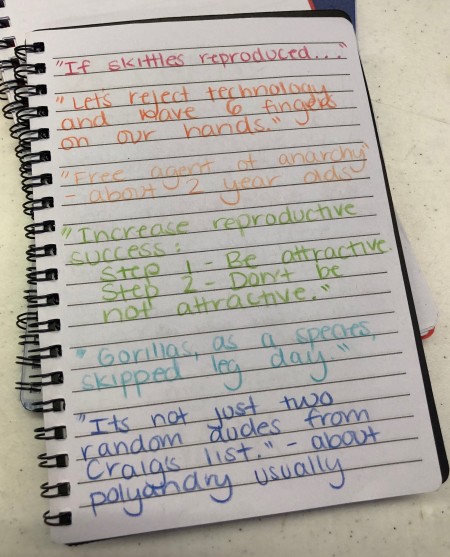Fitting my physical/biological anthropology course into different time frames and formats throughout the school year brings up challenges. For example, putting the same number of assignments in the condensed summer schedule would mean that I would never stop grading. Many assignments were fixed in their placement in the schedule. That left the Interacts as the type that could be better adjusted to fit the situation. One way to keep the assignment but reduce grading is to change how often the assignment is due. If I made the Interacts take the same amount of work but due just at the end of the summer session, then students get the same experience while I save time. The easiest option was to do the Interacts as usual but due at the final exam. But, a change in the assignment format could make use of the scheduling change. The assignment is typically done with a strong online component as students search the Internet and peruse useful sites and apps. The issue is that students would be more inclined to put it off until the last minute if the assignment was not readily accessible.Â
My solution was to make the Interacts into a paper journal assignment. I bought two cases of blank mini-journals from Dollar Tree, which arrived just in time for the start of the summer session. I adapted a lot of the usual Interact activities to be paper based. There was less online work, but more writing, drawing, and mind mapping. I wrote a list of general suggested activities. The main instruction: fill this journal by the final. In the participant observation spirit, I had my own journal, too.Â
The goal of the Interacts Journal was similar to the usual version of the assignment: get students thinking about anthropology and science in their daily lives. The paper journal was a way to always make the assignment available as students went about their day. I also made two points. One was that they could do anything related to anthropology (which was everything). The other was that the journal was theirs to keep after I graded them at the final, so they should make it ‘their own.’Â
Doing my own new assignment was a valuable experience. I went through several phases of journaling. First I started out with drawing, but found that it was very time consuming. I switched to making lists and mind maps, then to the fastest way I discovered to finish a page: glue newspaper clippings related to the course. Even so, I found out that 60 4 x 6†pages were a lot to fill. When it was grading time, I managed my expectations accordingly. No student did the whole 60 pages. The ones who were engaged did 45 at the most. Most people did around 30, which was actually how many I had completed. The students who did the worst had around 10 pages with a suspiciously consistent look to the handwriting and very spread out content.
There were some unexpected outcomes that I could account for next summer. Two students lost their journals during the six week course and bought their own replacements. If I had known, I would have given them one of my extra journals. In a more uplifting development, a number of students went far in decorating the journal and putting a lot of work in the contents. Among the surprises was a 3D paper model of a DNA molecule, several thank-you notes to me on the last pages, and a list of the weird things I said during lecture. This last surprise was the best thing to have come out of my teaching career so far:
I could tweak the assignment next summer to make it even more successful for more students. For example, I could remind students about working on their journals more during the summer session. Having progress checkpoints may also keep work on the journals going, even if they were not graded until the end. While I kept my own journal, but could have shared what I had done to remind and inspire the class.
I made the Interacts Journal assignment partly to solve a time management problem as partly on a whim to try something different. I was very happy with the results even though my expectations going in were too high. Next time, I will have a tuned grading scheme and ready solutions for lost journals. Having journal check-in times over the course may also help stop procrastinators.

